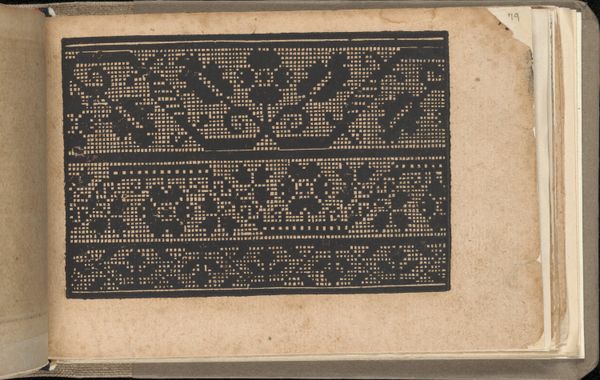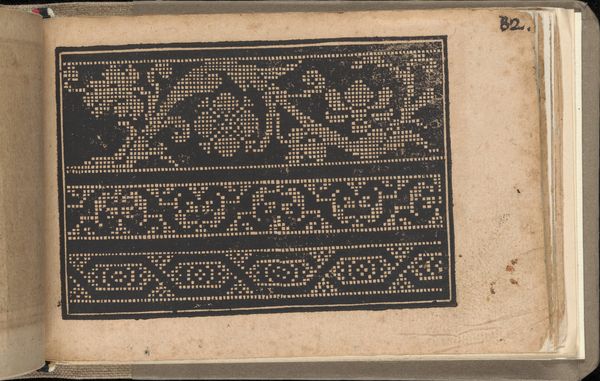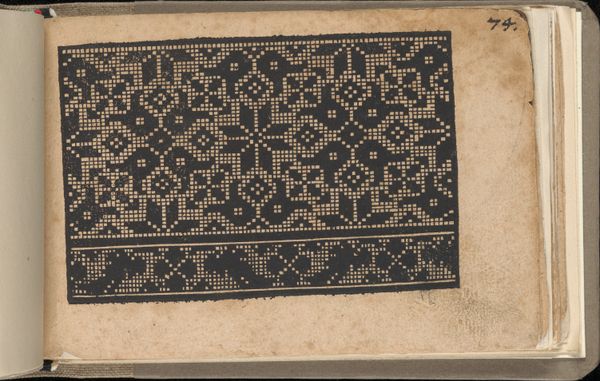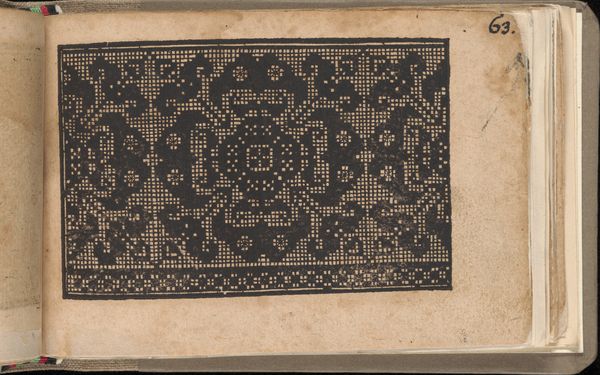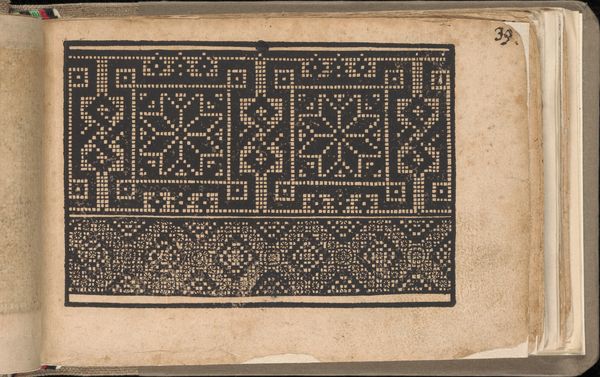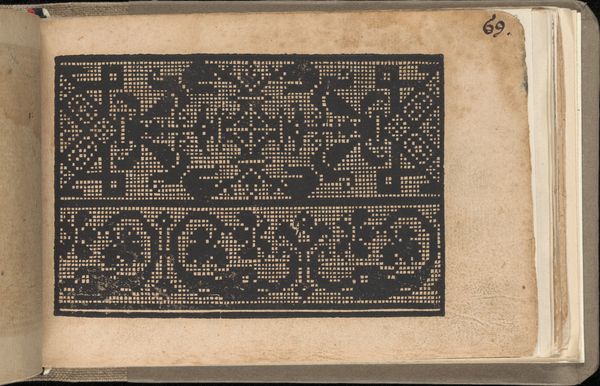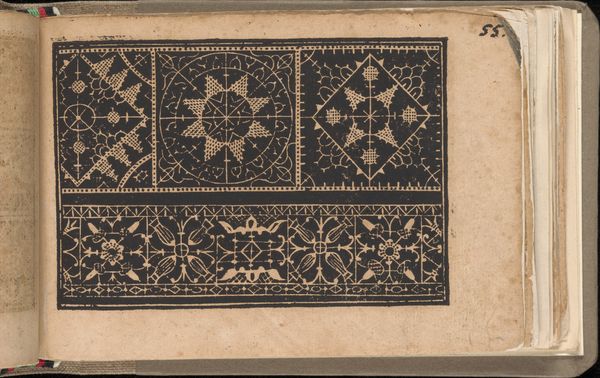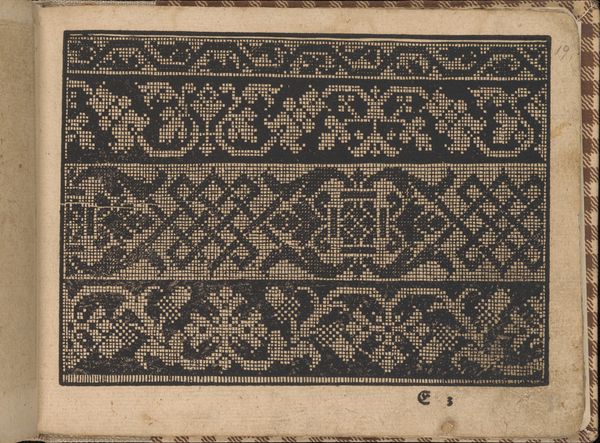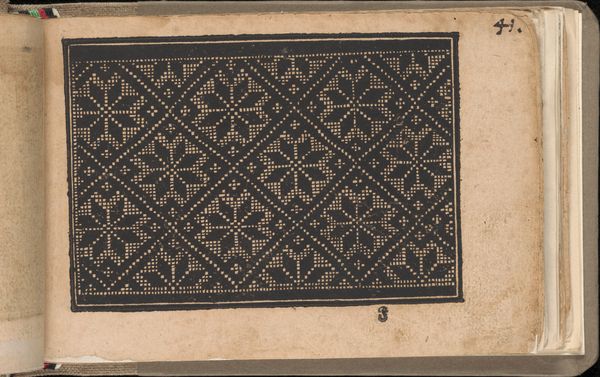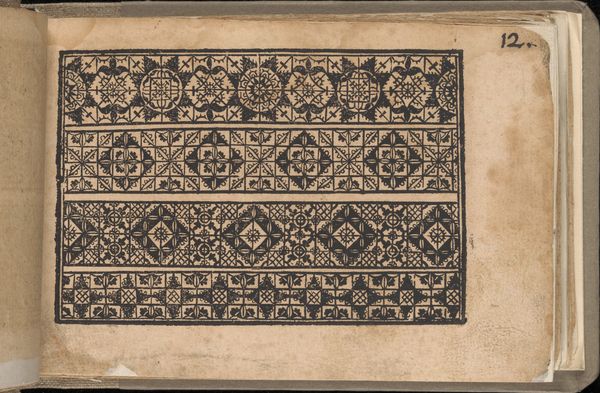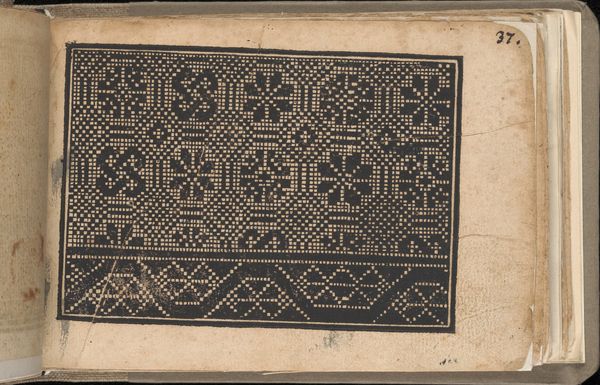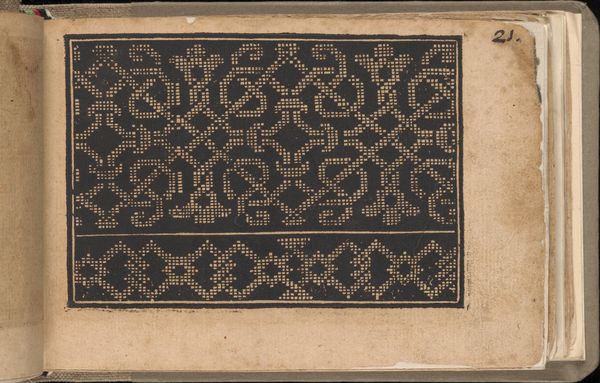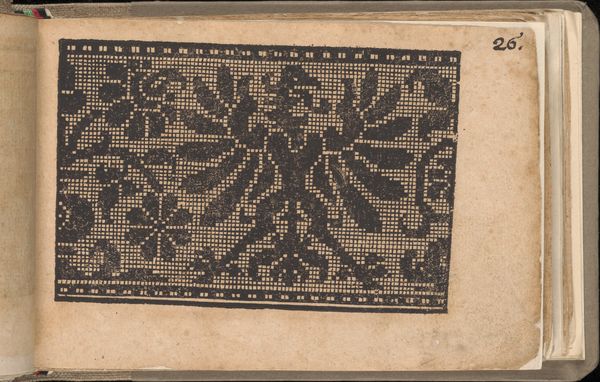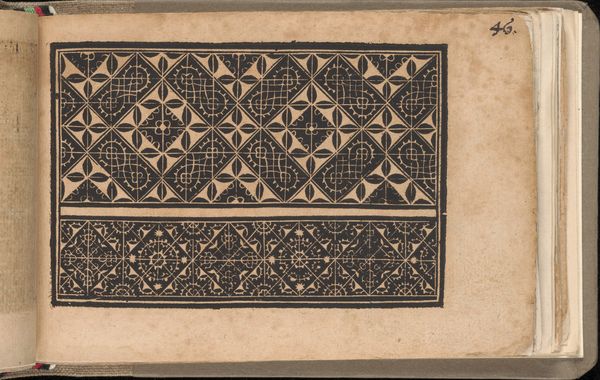
drawing, graphic-art, ornament, print, paper, woodcut
#
drawing
#
graphic-art
#
ornament
# print
#
paper
#
geometric
#
woodcut
Dimensions: Overall: 4 1/2 x 6 11/16 in. (11.5 x 17 cm)
Copyright: Public Domain
Curator: Today we’re looking at a page from Sigismundus Latomus’s Schön newes Modelbuch, printed in 1608. This particular sheet, number 61r, features a striking woodcut design, typical of the era’s pattern books. Editor: The stark contrast immediately grabs attention. The dense, almost architectural patterns remind me of textiles or even early computer punch cards. There’s an intricate elegance despite its very restricted palette. Curator: Absolutely. The piece embodies a dialogue between the organic and geometric. The linear structure clearly defines the design, yet there's a floral suggestion too, stemming from the rounded shapes filling those spaces. It’s a balance between rigid form and implied naturalism. Editor: Considering it's a woodcut print, I'm drawn to the sheer labor involved. Imagine meticulously carving this repeating motif. Was the artist perhaps also a craftsman of some sort? A pattern maker used by textile designers? Curator: That's quite likely. Model books were often created as resources for artisans—lacemakers, embroiderers, and the like—providing templates to follow and adapt. This wasn't just "art," it was a practical tool. Editor: So, the paper acts as an intermediary stage, a mode of dissemination of practical knowledge, if you like. It hints at a wider system of workshops and hands, working on detailed creations based on these patterns. You can imagine the materiality, too – of the carved wood, the inks applied to the page, as well as the very touch of human labor present throughout the design's transferral process. Curator: Precisely. The visual vocabulary in these ornament books also speaks volumes about early 17th-century aesthetics. The repetition isn't just decorative; it evokes a sense of order and refinement valued in Renaissance society. Editor: A glimpse into not just what they saw, but what they wanted to create—or consume. These books document that interchange. Curator: The print serves as a fascinating look into an ecosystem of workshops, artisanal skills, and patterns of commerce. Editor: Yes, what begins as an elegant print ends up representing such a large-scale process. Curator: It has given me much food for thought. Thank you.
Comments
No comments
Be the first to comment and join the conversation on the ultimate creative platform.
